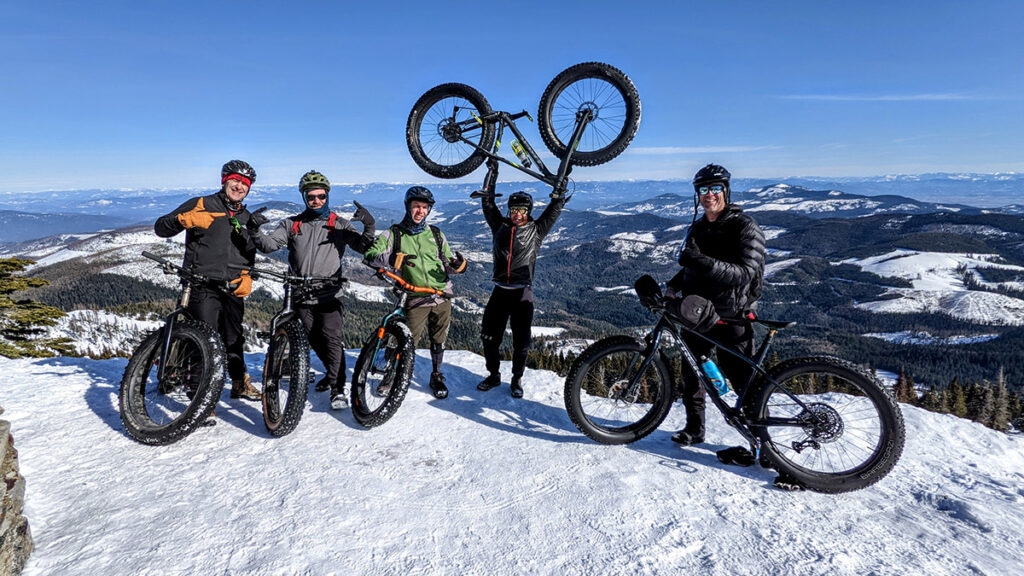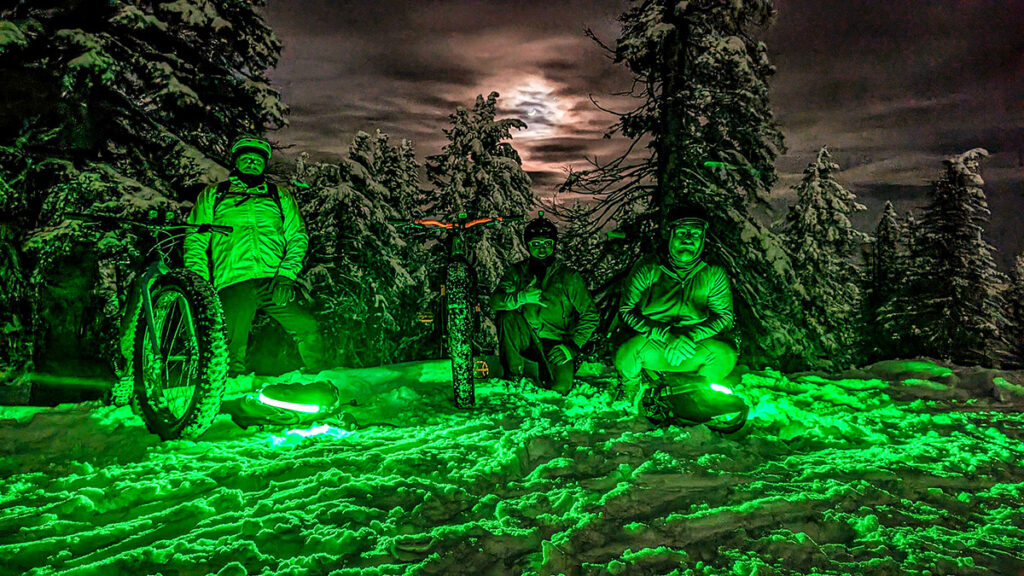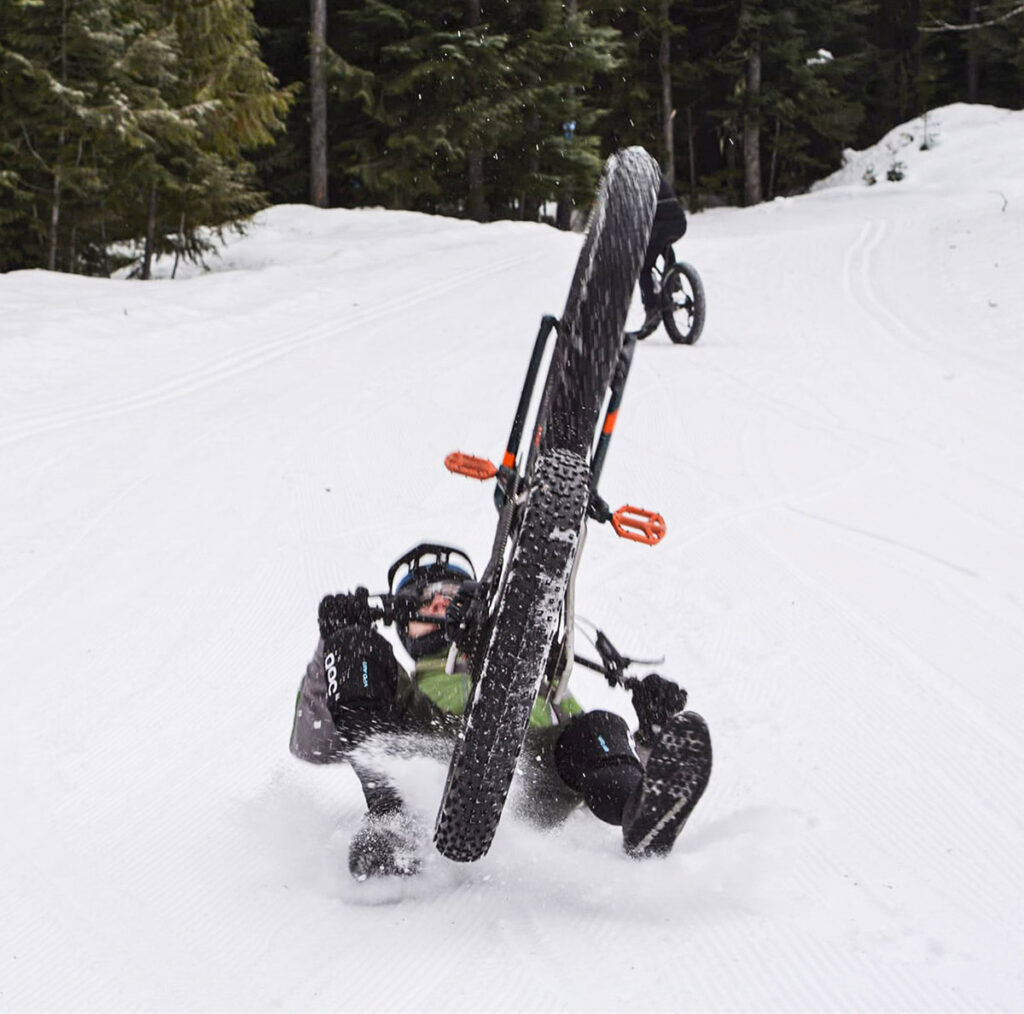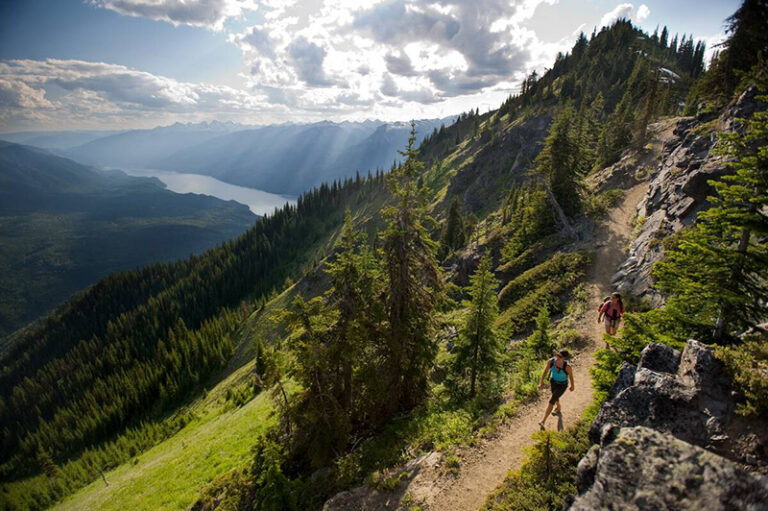By Chris Maccini
If you’re looking for Dan Wilson on a Wednesday evening, there’s a good chance you’ll find him outside, atop a bicycle, no matter the season. Wilson keeps a standing date with his mountain biking buddies: Wednesdays at 6 p.m., regardless of the weather.
As winter approaches and the days grow shorter and cooler, Wilson and his friends break out the headlamps and handlebar lights to continue their riding in the dark. That buys them a few more weeks of evening riding. Then the snow flies and the trails become unrideable on a traditional mountain bike. Until a few years ago, that signaled to Wilson that it was time to switch to skis. But, depending on the snow year, there are usually at least a few weeks between when the mountain biking trails close and the ski slopes open. It was during one of these times that Wilson first tried a fat bike.
“Honestly, it was during a not-so-good ski season,” Wilson recalls. “It’s like, man, I’m bored. I want to do something. It’s cold. It’s dark. Skiing’s not here yet. What am I gonna do? I need to get outside.” Wilson got wind that Wheel Sport, a Spokane bike shop, was holding a fat bike demo day. He decided to give it a try, but the experience was far from love at first ride.
“I was like, these suck. This is the worst. Why would I ever do this?” Wilson says, “But you know what, it was honestly because it was terrible conditions. And in the wrong conditions, fat bikes are not fun. But once you get a day that’s appropriate for it, you’re like, oh my god. I get it now.”

For those not yet initiated into the fat bike phenomenon, fat bikes are typically considered those with a tire width of at least 3.8 inches. Originally developed for riding in the extreme conditions of Alaskan snow or sandy New Mexico deserts, their wide footprint and low-pressure tires make them ideal for navigating loose, slippery terrain.
In recent years, fat bikes have exploded in popularity. Many ski resorts and cross-country ski areas now offer rentals and groom purpose-built trails for winter fat biking. In the Inland Northwest, you can now find groomed trails that are open to fat biking at Riverside State Park, Mount Spokane (not on the Nordic trails, however), 49 Degrees North, Farragut State Park, Schweitzer and more.
But for Wilson and his friends, the allure of fat biking is not constrained to these well-maintained trails. Instead, he thinks of fat biking the same way he thinks about mountain biking in the summer: a way to get outside, get some exercise and find those downhill thrills. Downhill fat biking isn’t the norm.
“I’m not a big cross-country guy,” he says. “I think fat biking gets locked into this cross-country category because that’s what a lot of people do with fat bikes. They’re off-season roadies or something for someone who wants to keep their fitness up. And that’s a part of fat biking. But that’s just not my style. I’ll slog it up a mountain, sometimes pushing it on foot, just to go down it.”

During those dark winter Wednesday evenings after work, Wilson has increasingly turned to downhillfat biking. His favorite spots are trail 110 on Mount Spokane and the Iller Creek trails in the Dishman Hills. It can be hard work, Wilson says, breaking trail uphill through fresh snow. But similar to snowshoeing or backcountry skiing, a group can rotate leaders, allowing those behind to ride on the packed-down trail. Even better, Wilson says, is if a group of snowshoers have come through recently and packed down the trail ahead of them.
Because the climb can be exhausting, Wilson and his friends often plan a reward for themselves at the top. They’ll ride up to the CCC cabin on Mount Spokane, for example, then stop inside to enjoy a dinner they’ve packed or a cold beverage. They’ll hang out, rest and change layers before heading back outside into the snow for the downhill ride.
One memorable night, Wilson and his friends emerged from the CCC cabin to find that nearly a foot of fresh powder had fallen while they were inside. Unlike skiing or snowboarding, lots of fresh powder isn’t always ideal for fat biking. But this time, the conditions aligned perfectly.
“It was so cold that the powder would just slough off, and there was a base underneath,” Wilson says. “It was incredible. You just got this powder floating, fanning out across your tires but not slowing you down. Just powder in the air flying everywhere. It looked so wild.”

Those unique conditions are part of the appeal of fat biking for Wilson. Unlike dirt mountain biking where trails remain relatively static throughout the season, each time you ride a trail on a fat bike in the winter, it’s brand new. The trails change depending on the snow conditions, and therefore riders must adapt their riding styles. On one day, you might have blower powder beneath your tires, and on another the trail might be a hard-packed luge track.
Regardless of the conditions, it’s getting outside on a regular basis that matters most to Wilson. And during the long, sometimes gloomy winter season, it’s his fat bike that helps him keep that standing Wednesday evening date.
If you’re interested in learning more about fat biking in the Inland Northwest, Wilson suggests joining the SOFA (Spokane’s Original Fatbike Association) group on Facebook. Or, just rent or buy a fat bike from one of the area’s great local shops and give it a try.
“Sliding around on a goofy bike, that’s what it’s all about!” Wilson says.
Cover photo courtesy Dan Wilson













